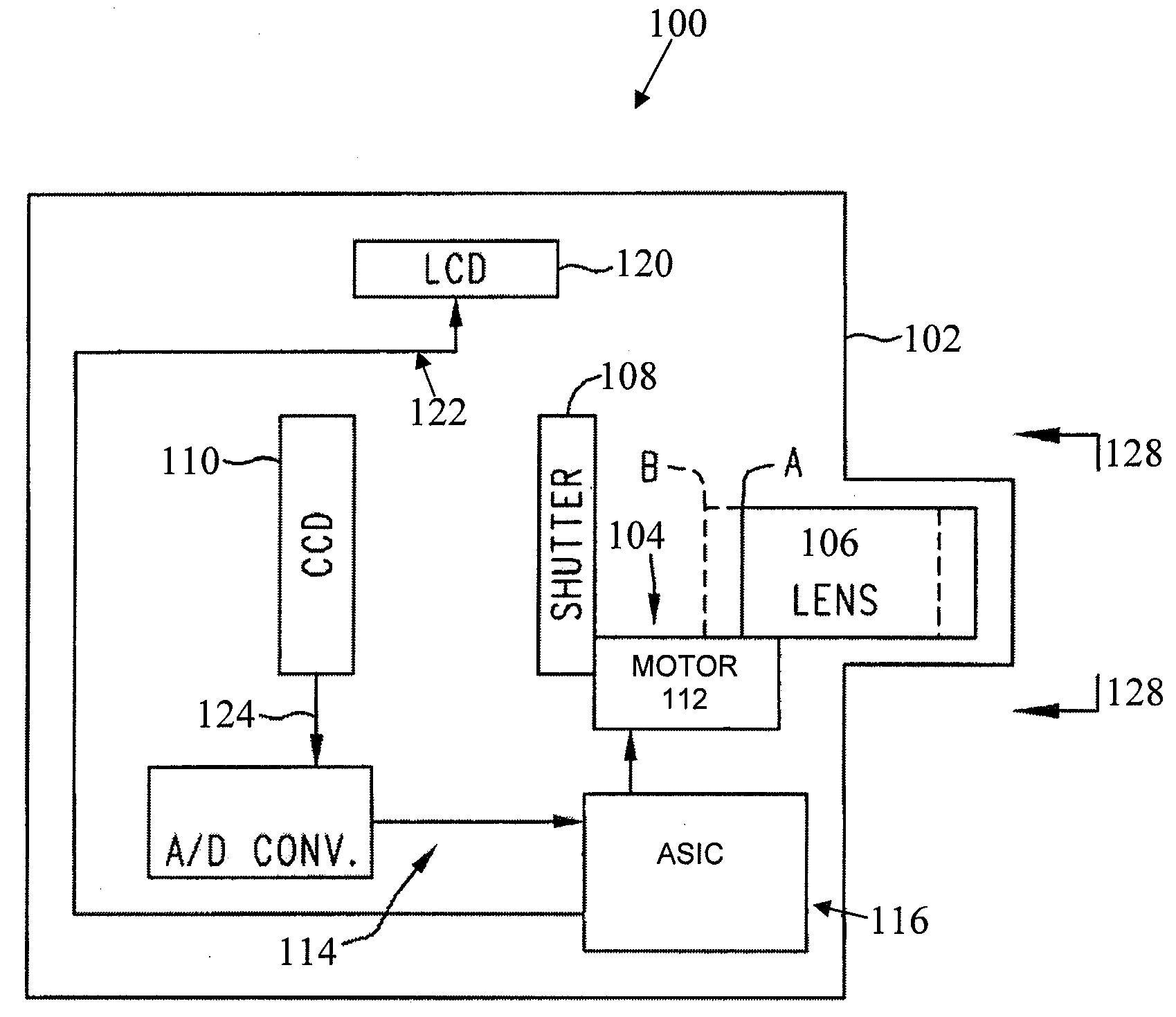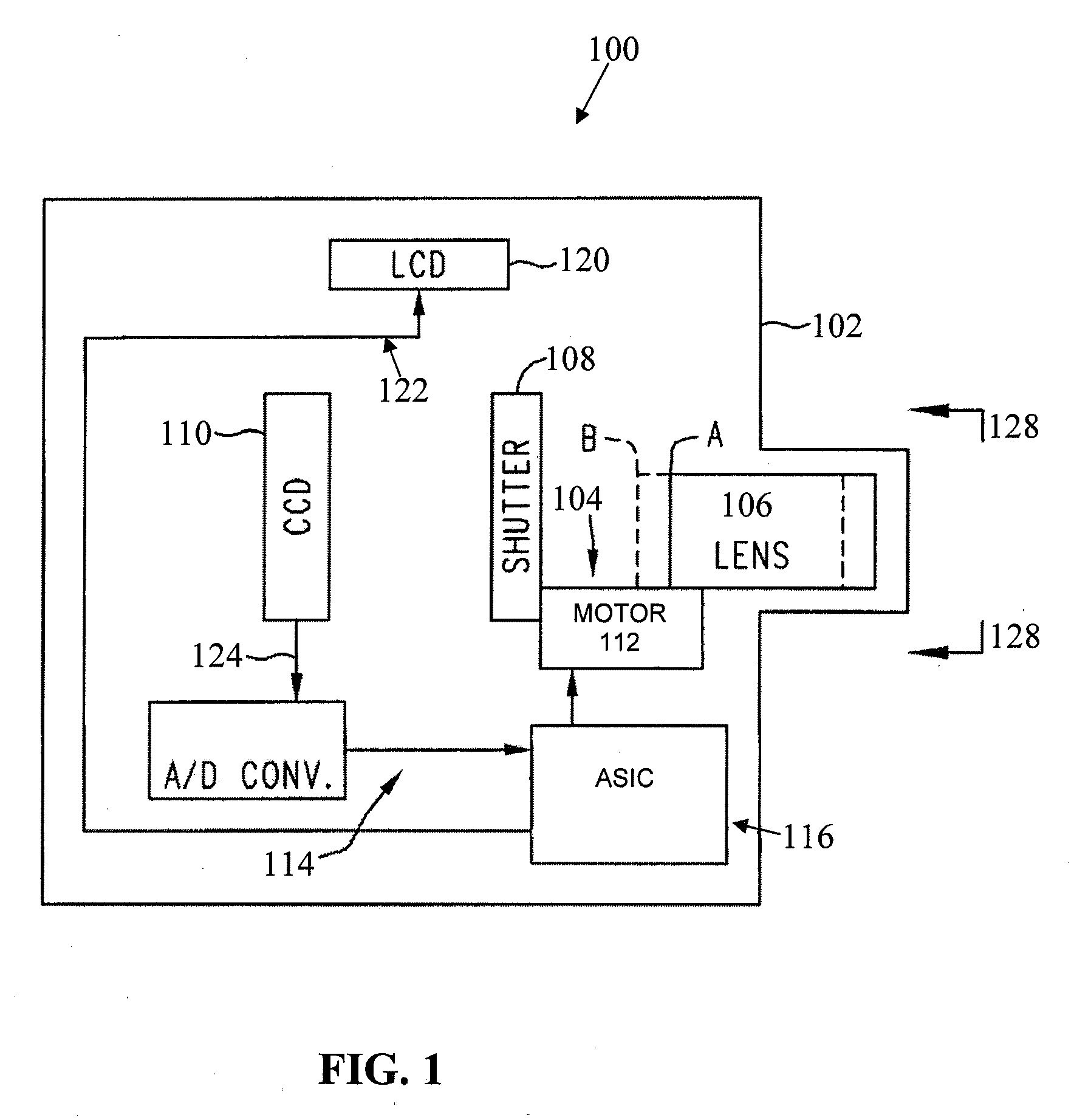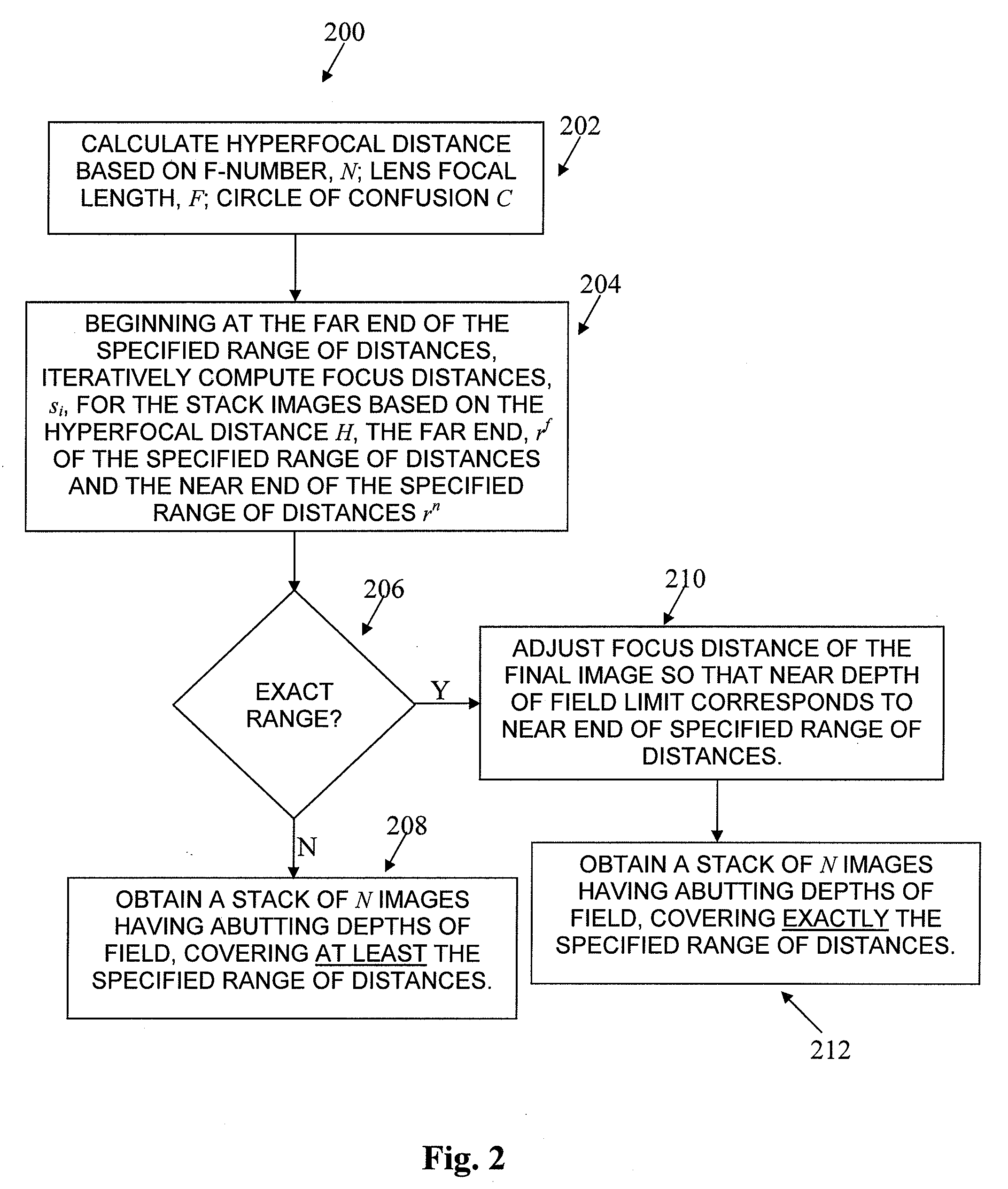Automated extended depth of field imaging apparatus and method
a technology of depth of field and imaging apparatus, which is applied in the field of extending the depth of field in images, can solve the problems of inconvenient and long exposure time, inconvenient use, and inability to achieve sufficient depth of field, so as to facilitate the production of composite images, prolong the depth of field, and automate the process of creating extended depth of field images.
- Summary
- Abstract
- Description
- Claims
- Application Information
AI Technical Summary
Benefits of technology
Problems solved by technology
Method used
Image
Examples
example i
[0031]An exemplary calculation of focus distances according to the above procedure proceeds as follows:
[0032]A photographer operating a camera and f=35 mm lens at N=4.0 specifies a range of distances rn=5 m and rf=25 m. The camera images using a CCD sensor characterized by a circle of confusion of c=6 μm. Then, from Equation 1, H=51.04 m. Iterating according to Equations 8 and 9, the focus distances are determined to be s1=16.78 m, s2=10.12 m, s3=7.25 m, s4=5.65 m and s5=4.62 m. Iteration ceases in accordance with Equation 10 with s5≦5.54 m. As noted above, the final focus distance, s5, may optionally be adjusted according to Equation 11 to s5′=sN′=5.54 m.
[0033]Alternatively, as shown in FIG. 3, it is possible to begin with the near end of the specified range of distances. In this approach, the procedure can be summarized as
s1=HrnH-rn(12)si=Hsi-1H-2si-1,(13)
with termination upon
sN≥HrfH+rf,(14)
and optional adjustment of the final image to
sN′=HrfH+rf,(15)
as previously described with r...
example ii
[0035]Again using the exemplary values of f=35 mm, N=4.0, rn=5 m and rf=25 m, and c=6 μm, and iterating according to Equations 12 and 13, the focus distances are determined to be s1=5.54 m, s2=7.08 m, s3=9.80 m, s4=15.91 m, and s5=42.24 m. Iteration ceases in accordance with Equation 14 with s5≧16.78 m, and the final focus distance may optionally be adjusted according to Equation 15 to s5′=sN′=16.78 m.
[0036]It is worth noting that the above procedures do allow the user to specify a range of distances in which rf=∞. In this case, in the inwardly-iterating procedure, the initial image is acquired at the hyperfocal distance. In the outwardly-iterating procedure, iteration is terminated when the focus distance exceeds the hyperfocal distance, and the focus distance of the final image is optionally adjusted back to the hyperfocal distance.
[0037]The procedures—in particular, the termination criterion in the inwardly iterating procedure and the initial image focus distance in the outwardly...
PUM
 Login to View More
Login to View More Abstract
Description
Claims
Application Information
 Login to View More
Login to View More - R&D
- Intellectual Property
- Life Sciences
- Materials
- Tech Scout
- Unparalleled Data Quality
- Higher Quality Content
- 60% Fewer Hallucinations
Browse by: Latest US Patents, China's latest patents, Technical Efficacy Thesaurus, Application Domain, Technology Topic, Popular Technical Reports.
© 2025 PatSnap. All rights reserved.Legal|Privacy policy|Modern Slavery Act Transparency Statement|Sitemap|About US| Contact US: help@patsnap.com



